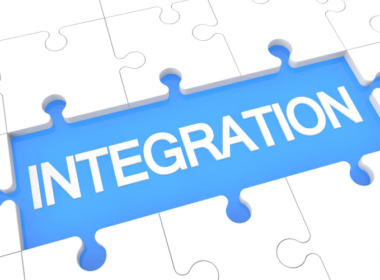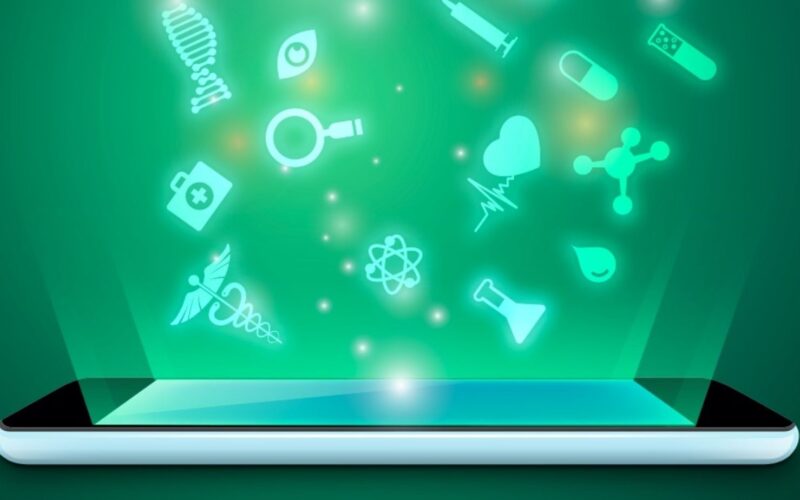COVID-19 underlined the need for accelerating healthcare digital transformation, and vaccination hyperness made me realize how useful something like Blockchain could be for transparent distribution of vaccines and providing general healthcare – with unified citizen identity (Aadhar ID), seamless integration with insurance providers & government databases.
– Vidhya Abhijith, Co-founder @ Codewave
US health spendings are estimated to reach $6.2 trillion by 2028. To grab a pie of this market, incumbent healthcare organizations need to embrace digital transformation. While disruptions loom over the healthcare sector, is ‘healthcare digital transformation’ your go-to strategy for thriving in times of uncertainty?
Yes, that’s true.
Disruption is knocking on the doors of healthcare organizations. Aaron Martin, VP of Providence says, “disruption is a competing business model that puts the existing incumbent model at a disadvantage. It typically delivers more value to the ends of the value chain — either the source of value creation (physicians/clinicians) or end consumer (patients) of value being created in the chain.”
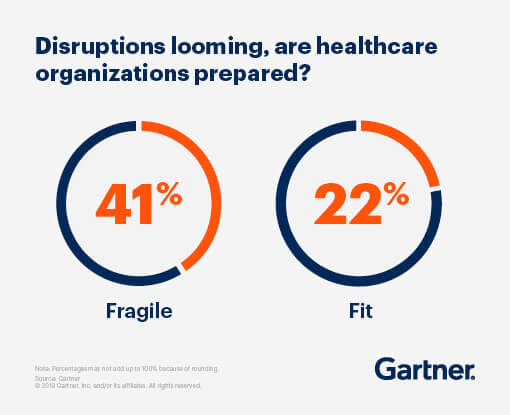
Just like the retail industry, fragile healthcare doors i.e., 41% of healthcare organizations possibly won’t survive this disruption and its pace, but fit ones may.
The solution to the challenges posed by healthcare disruption lies at the intersection of healthcare & technology i.e., healthcare digital transformation. Healthcare digitization is the key to
- unlocking innovation across the healthcare value chain,
- discovering new business models,
- integrating care delivery & management.
Another report projects the digital healthcare market to surpass $600 Bn+ by 2024. The strong growth prospects further heighten and bolster payers, providers, and investors’ enthusiasm for the healthcare digital transformation.
Read this article as your primer on digital transformation in healthcare.
What is digital transformation in healthcare?
Embracing EHRs (Electronic Health Records) and tech solutions that virtualize parts of care delivery like telehealth, remote monitoring, eVisits, digital front doors etcetera are the very basic steps towards healthcare digital transformation. The idea is to leverage technology to
- Enhance healthcare access,
- Optimize operations,
- Deliver timely care,
- Keep costs in check, and
- Match customer expectations.
A slightly deeper foray into digital healthcare means harnessing real-time data from disparate sources with the help of wearable technology and delivering predictive care on time. Harnessing technologies like AIML, XR, Drones, Digital-twins, Blockchain, Edge analytics, and 5G could be your next steps towards building a highly resilient and efficient healthcare organization.
5 digital transformation trends in healthcare
Genome sequencing is enabling clinicians to detect & treat diseases way before it becomes deadly. Predictive analytics is efficiently minimizing patient re-admissions and ensures the healthcare organization’s operational wheels don’t break due to overload. And several other trends are bringing revolutionary shifts in how patients, payers, and providers access or deliver care.
I personally feel excited about the time when surgeons can teleport and perform virtual robotic surgeries. It might become a reality soon. Anyways, here are the top 5 tech trends fuelling healthcare digital transformation.
Securing EHRs & Cybersecurity
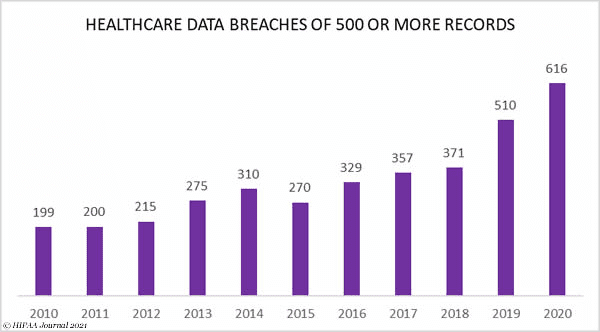
Cybersecurity has grown further in significance esp with escalating ransomware and phishing attacks on healthcare organizations’ EHR software. In 2020, 28Mn+ personally identifiable information of patients were exposed.
From Trinity Health to MEDNAX and Luxottica, a total of 616 attacks were reported where hackers stole 500 or more records. The biggest attack was the ‘Blackbaud ransomware attack’ where 8Mn+ health records were compromised. Healthcare data breaches forced several big healthcare chains to operate under EHR downtime procedures.
“[Through IoMT] healthcare will increase its attack surface rather than shrink its attack surface.”
– Frost & Sullivan
Securing your digital infrastructure in the age of cloud and IoMT is critical to delivering patient care. ‘Zero trust security model’ is a rising trend among healthcare payers and providers to boost security aspects.
It means that even the organization’s insiders would need to go through regular rigorous authentication and authorization before accessing critical data & applications.
Patching vulnerabilities, continuous security audits, incident response plans, data backups, training the employees, and collaborating with vendors who prioritize security are some of the concrete steps towards keeping your healthcare infrastructure safe.
IoMT & Wearables
Internet of medical things (IoMT) is rapidly transforming the care delivery process. IoMT is estimated to be a $142.5 Bn+ market by 2026. IoMT is a network of digitally connected smart edge devices, software systems, and servers that empowers you to deliver remote patient care.
Prevalence of chronic diseases, the ability of IoMT devices to track, collect, analyze, transmit health data, and the obvious advantages of real-time health monitoring, improved drug dosage management, improved patient outcomes, and reduction in medical expenditure are some of the prominent contributors behind the rapid adoption of smart wearable medical devices across the world.
Healthcare organizations are adopting new technologies and operating models to enhance the patient’s overall experience. 88% of care providers are investing in remote patient care solutions and IoMT enables you to achieve exactly that.
5G
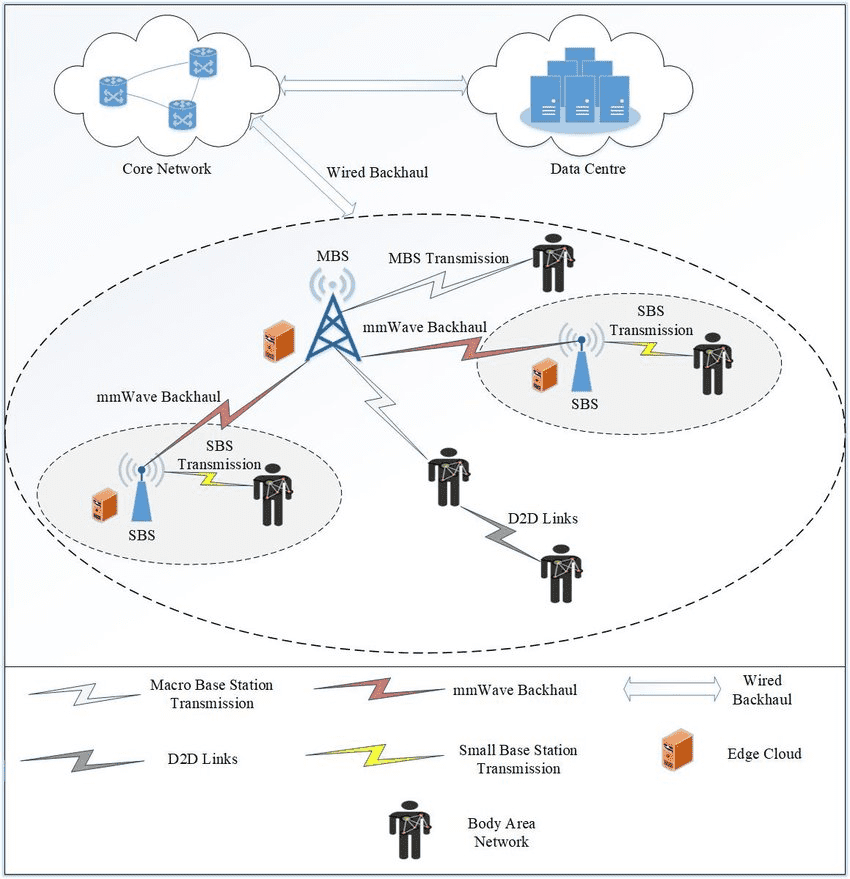
5G can speed up the digitization rate in healthcare. Network bandwidth is one of the major bottlenecks that limit the use-cases and penetration of IoMT. PET scanners generate extremely large file sizes. One patient can have filed as big as 1 gigabyte. High network performance is desirable to transmit these files in real-time to the specialist doctors. With 5G it would be possible to reliably deliver care in real-time.
In short, 5G would enable healthcare players to efficiently utilize IoT, AR, VR, AI & Analytics. R&D for 5G-powered smart healthcare architectures is rising.
Data, AI & ML
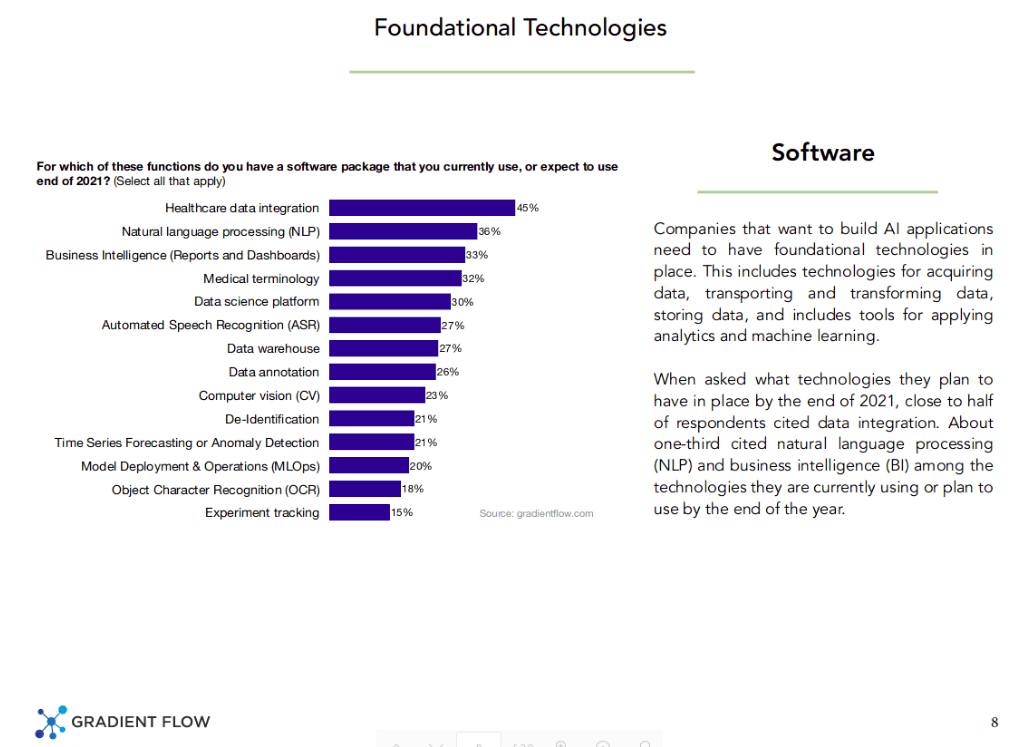
Healthcare is not a ‘move fast and break things’ industry. But IoMT, 5G, AI & ML together are poised to give the healthcare industry its biggest shakeup in recent times. What Biochemistry experts used to achieve after 10s of years of studies, experiments, and experiences, algorithms are doing that in a much shorter time with better efficiency.
Automated drug discovery, preventive predictive care, and personalized treatment for optimum patient results are the most pursued verticals among the IT teams of healthcare organizations. All this is possible when IoMT, AI, and ML work in tandem. Data is the fuel, 5G is the pipeline, AIML is the refinery, IoMT is like a drilling rig.
Support Vector Machine (SVM), Neural Network, Logistic Regression, Random Forest, Discriminant Analysis, Naive Bayes, Nearest Neighbor, Decision Tree, and Hidden Markov are the most widely used AI algorithms in the healthcare domain.
SVMs are popular for solving classification problems and are extensively used in clinical research to identify imaging biomarkers and diagnose neurological diseases. Neural networks are used for drug discovery and development, biochemical analysis, image analysis, etcetera. For example, predicting breast cancer by analyzing mammographic images.
Blockchain
3rd biggest cause behind death in the US is clinical mistakes. Yes, but it’s not there on any death certificate. A major reason behind these clinical mistakes is the lack of effective patient information sharing between healthcare organizations. This patient information gap amid healthcare institutions and practitioners can be addressed with blockchain. Blockchain technology at its core is a big distributed ledger with immutable records of every single transaction between the stakeholders.
Now, imagine a nationwide blockchain network for EHRs and/or EMRs. It would exponentially boost interoperability between healthcare patients, payers, and providers, put patients in control of their data, enhance health outcomes for patients, and bolster data security to a level that is beyond the reach of even high-caliber hackers.
Those were our top 5 picks for transformational technologies in the healthcare industry. 3D printing, nano-technology are some other promising developments in healthcare but more on them in some other post.
How Codewave Can Help You In Digitally Transforming Your Healthcare Institution?
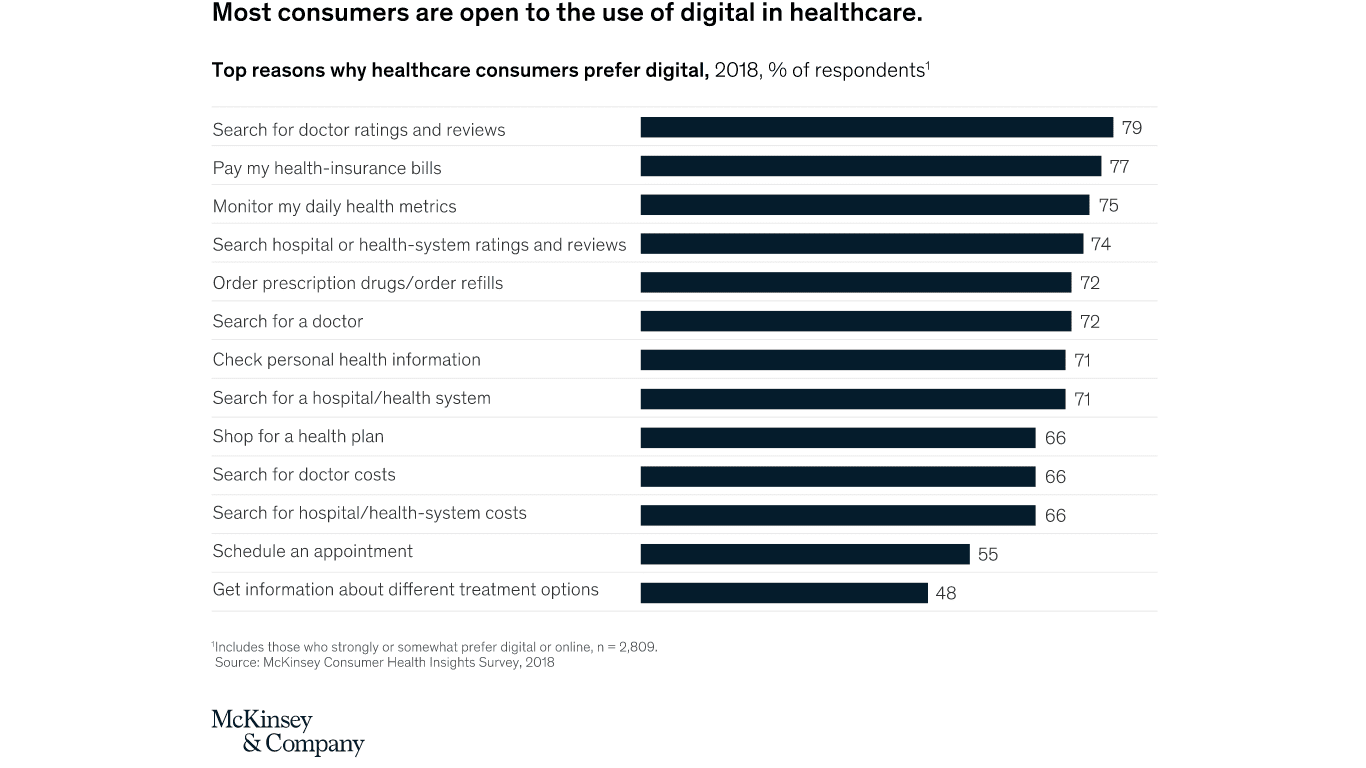
When consumers are open to the use of digital in healthcare what’s stopping you from adopting a better operational healthcare infrastructure and governance?
Organizational culture?
Lack of digitally skilled workforce?
Government regulations?
Budget?
Well, ‘culture’ is an internal issue and your management team is the best one to take care of it.
Team Codewave can help you fill the skill gap. Our professionals with expertise in Web, Mobile, and IoT technologies can build high-performing, highly secure software solutions for you.
From revamping your existing siloed tech stack to building new intelligent digital capabilities from scratch, we got your back.
Do take a look at our healthcare case studies, explore our services, and feel free to reach our consultants for developing innovative AI-ML, Data, Blockchain, IoMT applications.
Outsource your machine learning requirements to Codewave’s experienced developers.
Frequently Asked Questions(FAQs)
1. What are the benefits of digital healthcare transformation for patients?
Healthcare digital transformation can bring many benefits for patients, including improved access to medical information, increased convenience and efficiency in scheduling appointments and managing prescriptions, and improved communication with healthcare providers. Additionally, digital tools can help patients better manage their health and wellness, such as through telehealth and remote monitoring. This can lead to better health outcomes, reduced costs, and improved patient satisfaction.
2. How does healthcare digital transformation improve the efficiency of healthcare systems?
Healthcare digital transformation improves the efficiency of healthcare systems by increasing automation, data analysis, and communication. Automation of repetitive tasks such as appointment scheduling and prescription refills allows healthcare professionals to focus on more important tasks. Data analysis allows for improved patient outcomes by identifying patterns and trends that can inform treatment decisions. Improved communication through digital channels allows for more efficient sharing of patient information and collaboration between healthcare providers. Overall, digital transformation can help to reduce costs, improve patient outcomes, and increase the overall efficiency of the healthcare system.
3. How can healthcare providers ensure the security and privacy of patient data?
Healthcare providers can ensure the security and privacy of patient data by implementing a combination of technical and organizational measures. These measures can include:
- implementing encryption for patient data both in transit and at rest.
- Implementing secure access controls and authentication mechanisms.
- Regularly monitoring systems for potential breaches.
- Conducting regular security audits and risk assessments.
- Providing regular training to staff on data privacy and security best practices.
- Complying with relevant regulations and industry standards such as HIPAA.
4. How can healthcare organizations implement digital transformation in a cost-effective manner?
Go lean. Implement digital transformation in a cost-effective manner by starting small and then sustainably scaling up. This can be done by identifying specific areas where technology can improve efficiency and patient outcomes, such as electronic medical records or telemedicine. Organizations can also look for cost-effective solutions such as cloud-based platforms, open-source software, and partnerships with technology companies. Additionally, training and upskilling existing staff on new technology are essential to ensure successful adoption. By taking a phased approach, healthcare organizations can implement digital transformation in a cost-effective and sustainable manner.



